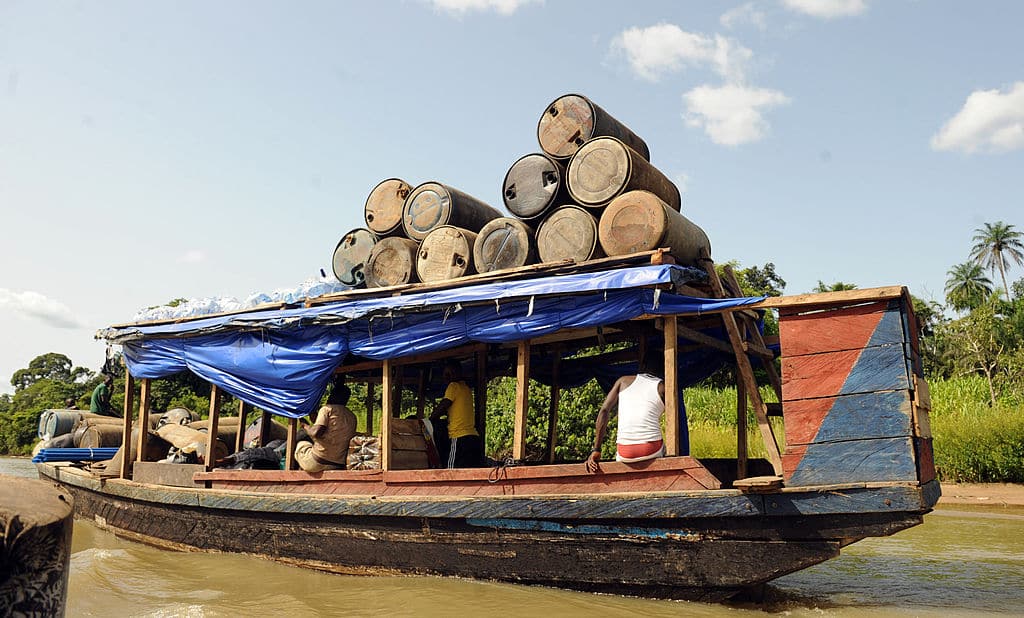Over 600 people have died and 1.3 million people displaced in Nigeria, with heavy rains and the worst flooding in the past decade impacting the country.
Flooding has hit 27 out of 33 states in Nigeria, with 90,000 homes and major swathes of farmland reportedly damaged or destroyed.
Officials say five states – Rivers, Anambra, Delta, Cross River and Bayelsa – remain at risk until the end of November. Authorities attribute the flooding to unusually heavy rainfall over the last few months in various parts, exacerbated by the release of extra water from the Lagdo dam in neighboring Cameroon.
The Nigeria Hydrological Services Agency (NIHSA) warned states and local government councils across the country on September 16 to intensify efforts to avoid flood-related disasters.
“When I was chatting with someone in a different state, they called this state ‘the sinking city’ and I pray we don’t sink because according to reports, we heard that the flood might extend to November,” says Gillian Adeh, a tour operator and travel consultant in Bayelsa, one of the states worst affected in the South-South region of Nigeria, located in the core of the Niger Delta region.
Adeh says the water current is particularly strong. The floods have displaced people in Biseni, Aguadama Ekpetiama, Amassoma, Oporoma, Sagbama, Odi, Ogia and the capital city of Yenagoa in Bayelsa. Igbogene, Akenfa, Amarata and Azikoro are also affected, she says.
“On Thursday, we tried to paddle through the area with a canoe. There you can see dead bodies floating on the water,” says Innocent Aluu, speaking of the Ogbia burial ground in Bayelsa State.
With the roads cut off by the water, there was no way Aluu, a commercial chicken farmer, could get supplies, feed for his livestock or medication. He is battling both the effects of the flood and the arrival of Avian Influenza.
Over the last week, he has lost 10,000 chickens, losing what he estimates to be 75 million Naira ($172,000) as a result.
When he spoke to FORBES AFRICA on Saturday, October 22, Bayelsa’s roads remained flooded and inaccessible.
He says he’s one of many to have lost livestock and livelihood. The first thing they’ve been focused on is saving lives, and then taking stock of the damage. He is worried about his 17 employees, who are mainly women, and how everyone is going to recover.
“It has also affected the cost of goods and services. Prices of goods have gone up. They are so expensive that the average family finds it difficult to even eat twice a day. Petrol has been scarce. If you do get petrol, you get it at 500 Naira to 1000 Naira ($1-$2) per liter,” says Adeh.
Petrol usually costs 190 Naira ($0.4) per liter.
Adeh says rice costs as much as 55,000 Naira ($126), and Garri – a type of flour from cassava – costs the same. Electricity has been irregular, she explains, with people relying on solar power and inverters as well as generators.
States in northern and central Nigeria producing rice are among the worst impacted. Annual food inflation has also risen.
The government has set up two Internally Displaced People (IDP) camps, one in Oxbow lake, and another in Igbogene, on the outskirts of the state, Adeh says.
“Aside [from] that, I’ve not felt the presence of international NGOs or local NGOs. So what we have right now is just some well-meaning Bayelsans’ who are currently in the state coming together and pooling their resources to assist these internally displaced people, the best way that they can.”
Aluu adds that in the state capital, there are a few NGOs, but he has not seen anything in his community, just people helping each other.
On October 13, the Ministry of Humanitarian Affairs noted that the Nigerian government had begun distribution of 12,000 metric tons of food and non-food items to the states affected. The National Emergency Management Agency (NEMA) began providing relief materials to persons affected.
The Minister of Humanitarian Affairs, Disaster Management and Social Development, Sadiya Umar Farouq, said to the press on October 13, also the International Day for Disaster Risk Reduction (IDDRR), at an event organized by NEMA in Abuja: “While we shall not apportion blame, we need to acknowledge the fact that we all had enough warning and our advocacy was timely. However, communities must recognize that all disasters are local and they must take climate predictions and flood outlooks warnings seriously. We can’t out [right] eliminate flood[s] but we can keep people safe. That responsibility is collectively ours.”
This year’s floods are reportedly the worst since 2012, when rainfall combined with the release of water from dams in Nigeria, Cameroon, and Niger killed almost 400 people, displacing 2.1 million – resulting in an estimated damage of $17 billion that year.
When Adeh was speaking to FORBES AFRICA, Bayelsa was cut off from the other states in Nigeria, with no way in and no way out for ordinary citizens.
“If anyone is in a dire need to leave the state, then you’re doing that at risk of your life, because the flood has already covered the whole of east west road. Some parts of the roads are cut off.”
“The current of this flood is really dangerous. A lot of people, just because they want to make ends meet, they lose their lives on a daily basis. We need help, not just prayers, we actually need help. Practical fiscal help,” says Adeh, pleading for the presence of international and local NGOs.
